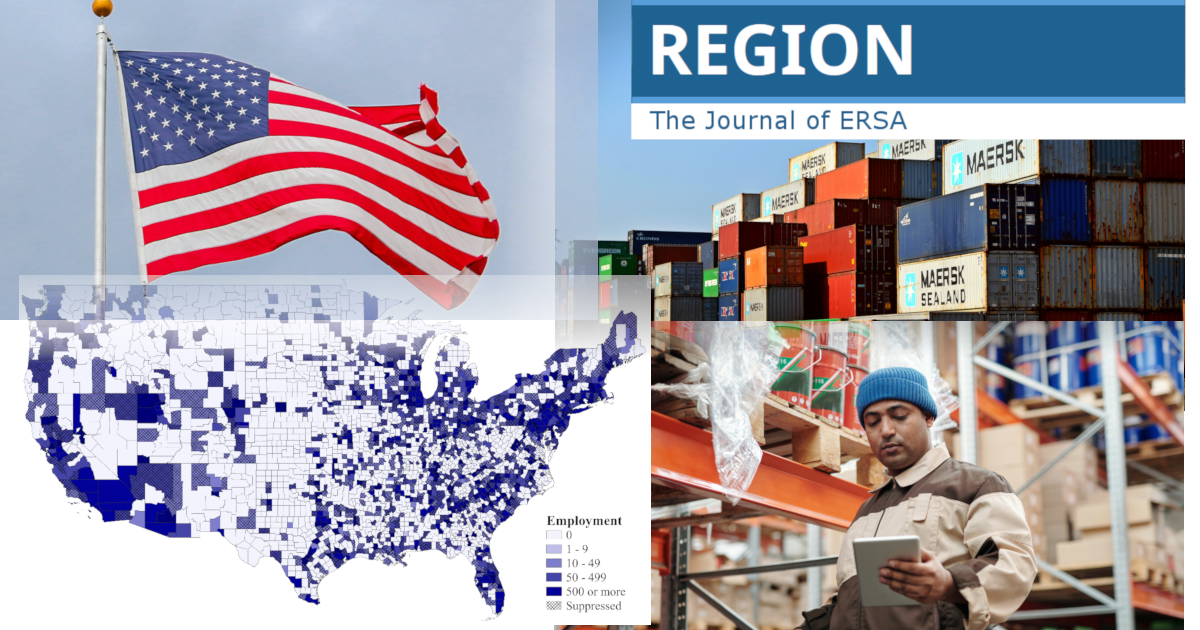Estimating Determinants of Transportation and Warehousing Establishment Locations Using U.S. Administrative Data
DOI:
https://doi.org/10.18335/region.v9i1.366Abstract
Interactions between transportation and warehousing and other industry clusters are not widely explored and the determinants of logistics locational determinants is limited in the U.S. context. These gaps in the literature, along with the U.S. transportation and warehousing sector's decentralization from urban areas and concentration in regions, highlight the importance of understanding the effects of place-based factors and inter-industry clusters on the locations and employment of transportation and warehousing industries. The analysis uses restricted-access U.S. Census Bureau data aggregated to the county level, along with secondary data sources, to estimate the locational determinants of transportation and warehousing (TW) industries based on transportation infrastructure as well as sociodemographic and institutional variables. The analysis takes a cross-sectional (non-causal) approach to focus on time-invariant location factors while testing and implementing zero-inflated count data distributions to model the data generation processes more accurately. Results indicate that subsectors are affected differently by infrastructure, sociodemographic, and institutional variables. Additionally, different factors are associated with industry presence versus size. Finally, we show that data using aggregated industries obscures locational factors' importance for individual sub-sectors and, further, that industrial aggregation obscures TW sectors' relationships to other clusters.

Downloads
Published
How to Cite
Issue
Section
License
Copyright (c) 2022 Craig Carpenter, Rebekka Dudensing, Anders Van Sandt

This work is licensed under a Creative Commons Attribution-NonCommercial 4.0 International License.
REGION is an open journal, and uses the standard Creative Commons license: Copyright We want authors to retain the maximum control over their work consistent with the first goal. For this reason, authors who publish in REGION will release their articles under the Creative Commons Attribution license. This license allows anyone to copy and distribute the article provided that appropriate attribution is given to REGION and the authors. For details of the rights authors grant users of their work, see the "human-readable summary" of the license, with a link to the full license. (Note that "you" refers to a user, not an author, in the summary.) Upon submission, the authors agree that the following three items are true: 1) The manuscript named above: a) represents valid work and neither it nor any other that I have written with substantially similar content has been published before in any form except as a preprint, b) is not concurrently submitted to another publication, and c) does not infringe anyone’s copyright. The Author(s) holds ERSA, WU, REGION, and the Editors of REGION harmless against all copyright claims. d) I have, or a coauthor has, had sufficient access to the data to verify the manuscript’s scientific integrity. 2) If asked, I will provide or fully cooperate in providing the data on which the manuscript is based so the editors or their assignees can examine it (where possible) 3) For papers with more than one author, I as the submitter have the permission of the coauthors to submit this work, and all authors agree that the corresponding author will be the main correspondent with the editorial office, and review the edited manuscript and proof. If there is only one author, I will be the corresponding author and agree to handle these responsibilities.




